Type
Work Project
Role
UX Designer
Project summary
As a 10-million-user food delivery app, users' experience highly depends on on-time shipping. User's address management experience is crucial for it affects riders' deliver efficiency.
This project, redesign of address management on Eleme App, is conducted to elevate the experience of address management as well as riders' delivery efficiency.
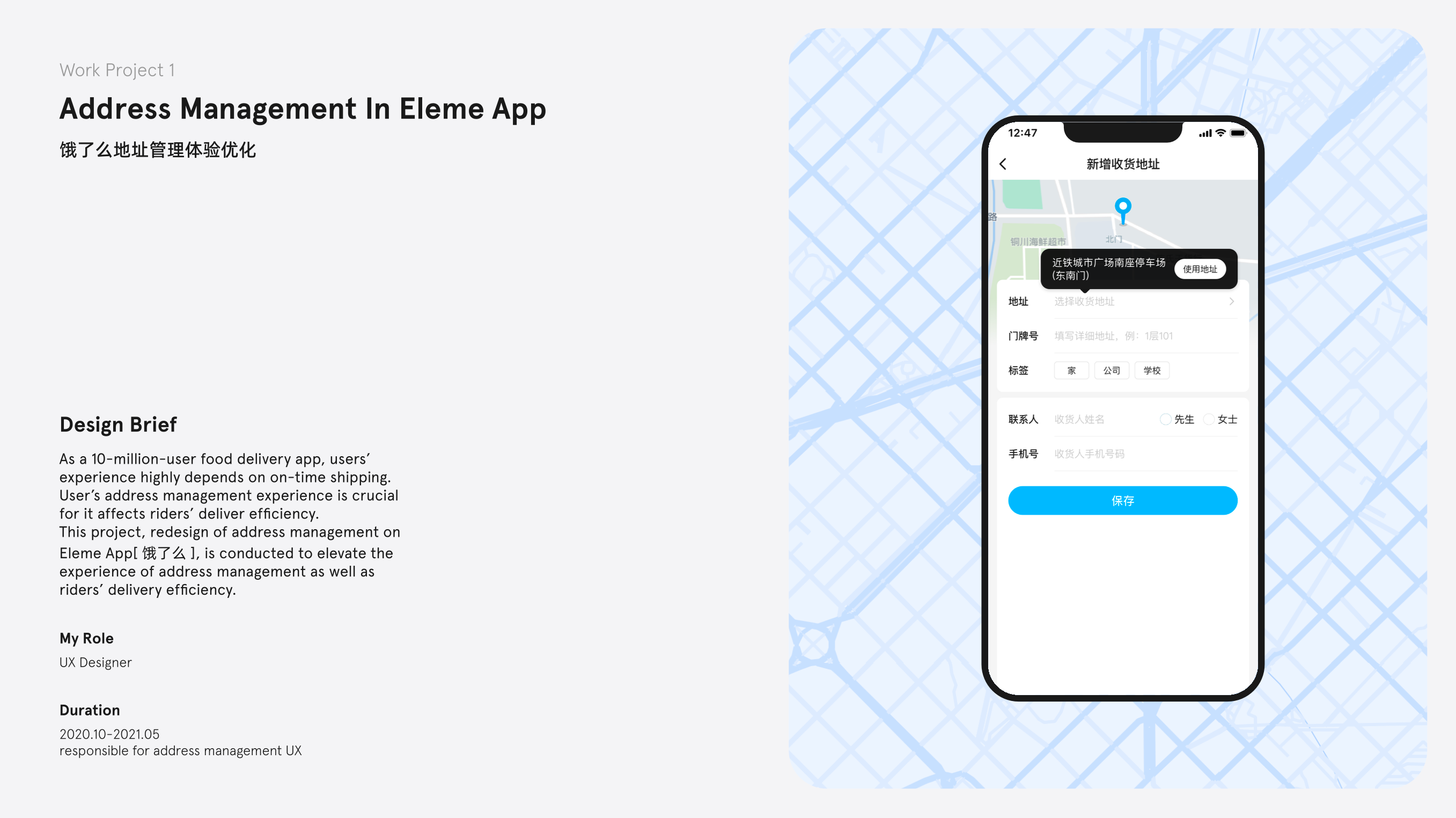
Design Scope
Use Case 1 - Choose address
Eleme user usually choose their address before picking stores and checkout to specify their location.In this use case, efficiency is the keyword since users never delete their unused addresses. As data shows, 80% of the users have more than 20 addresses, but their only use 3 mostly.
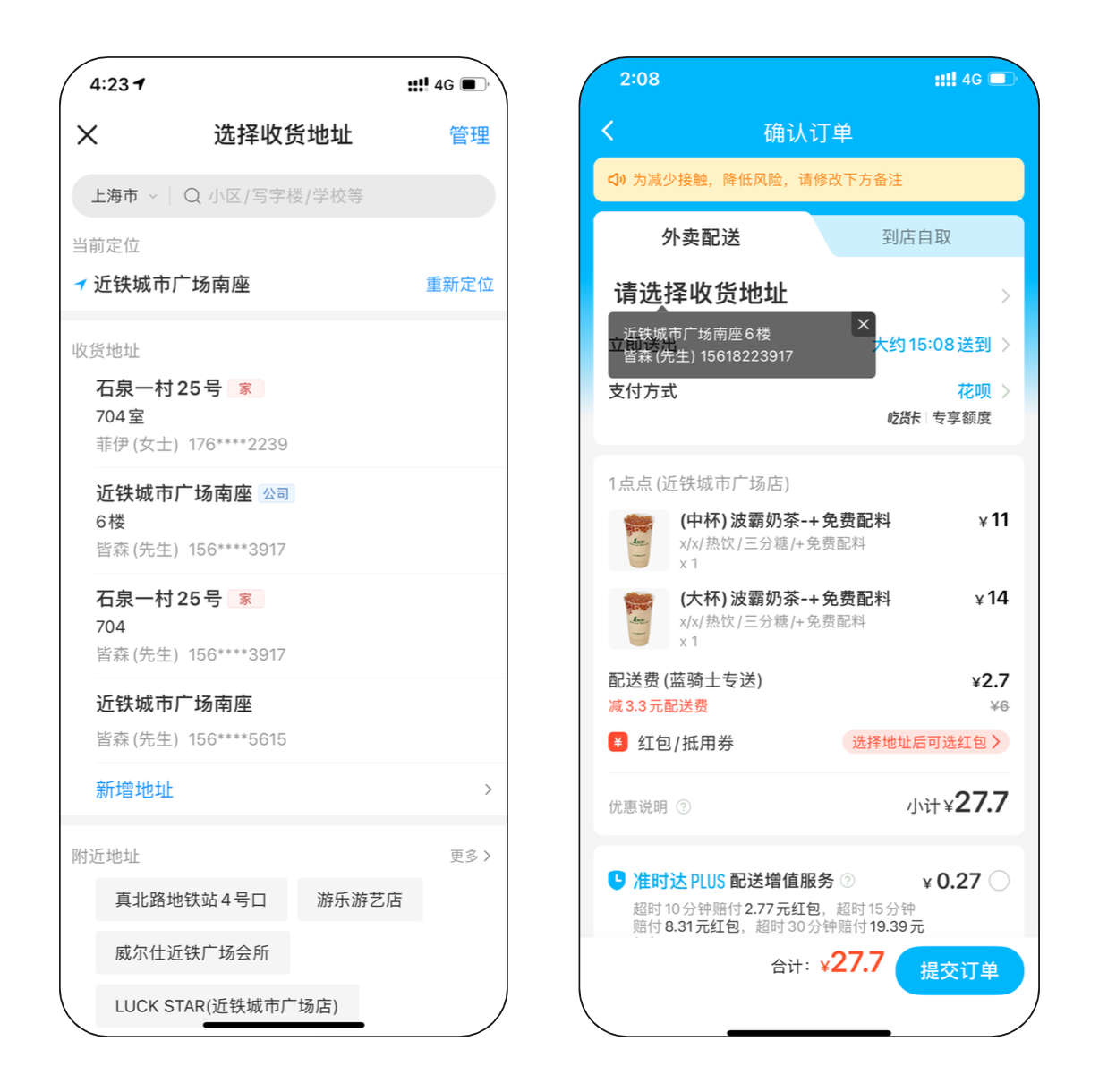
Use Case 2 - Add address
Adding address is another commonly-used scenario. Most of the adding action take place before checkout. CES(Customer Effort Score) and accuracy is the keywords of this use case. Since users spend more than 20 seconds, there's definitely a design space to promote the experience.
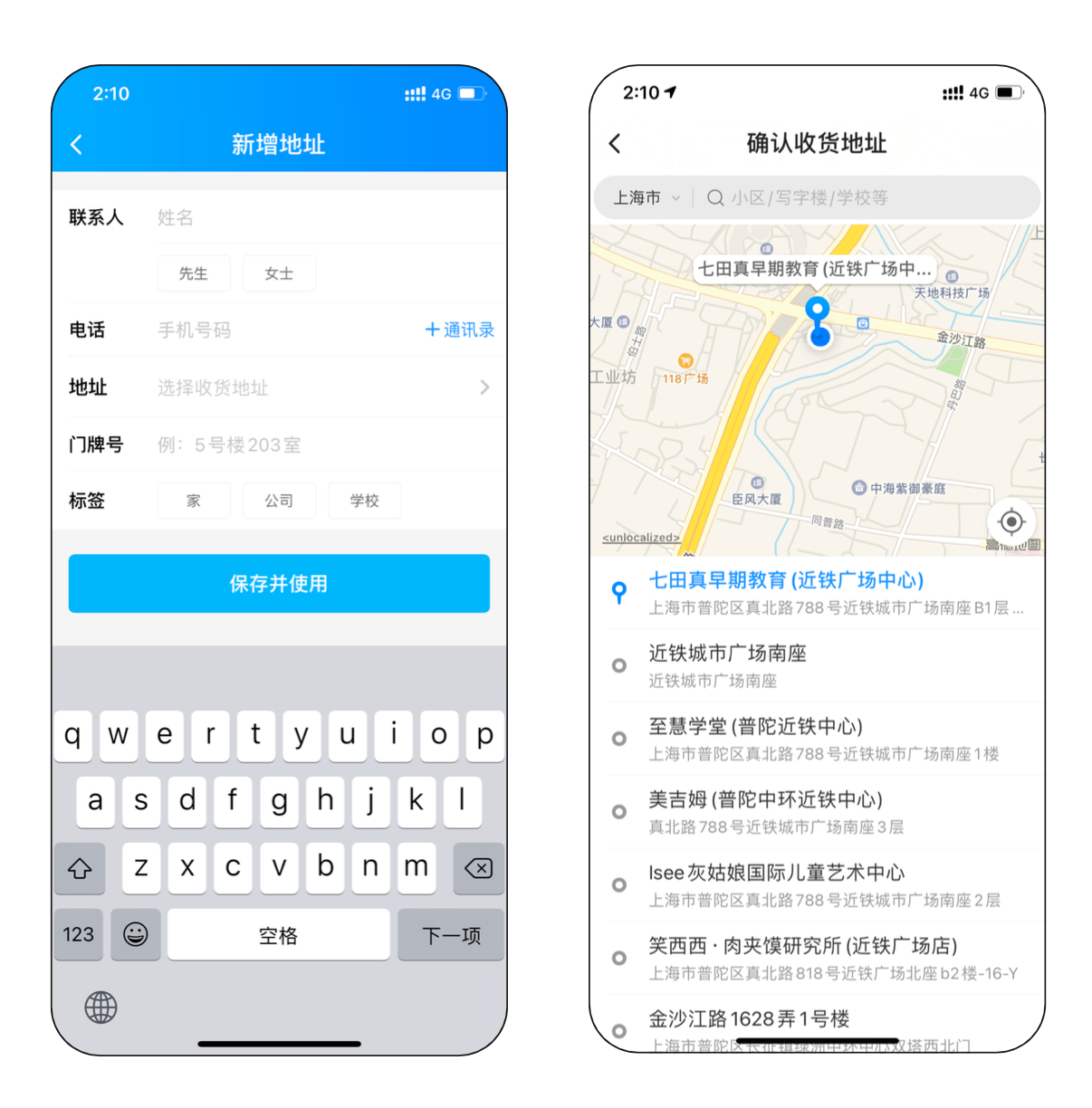
Key Value
High Traffic Page
• 950,000 UV(Unique Visit) of "New Address Page"everyday
• Nearly 20% of orders require changing address before checkout
Large number of false order
• 120,000 inaccurate-address orders took place everyday
Large amount of rider complaints
• 14,000 complaints from delivery riders about inaccurate address
• #2 complaints among all rider complaints
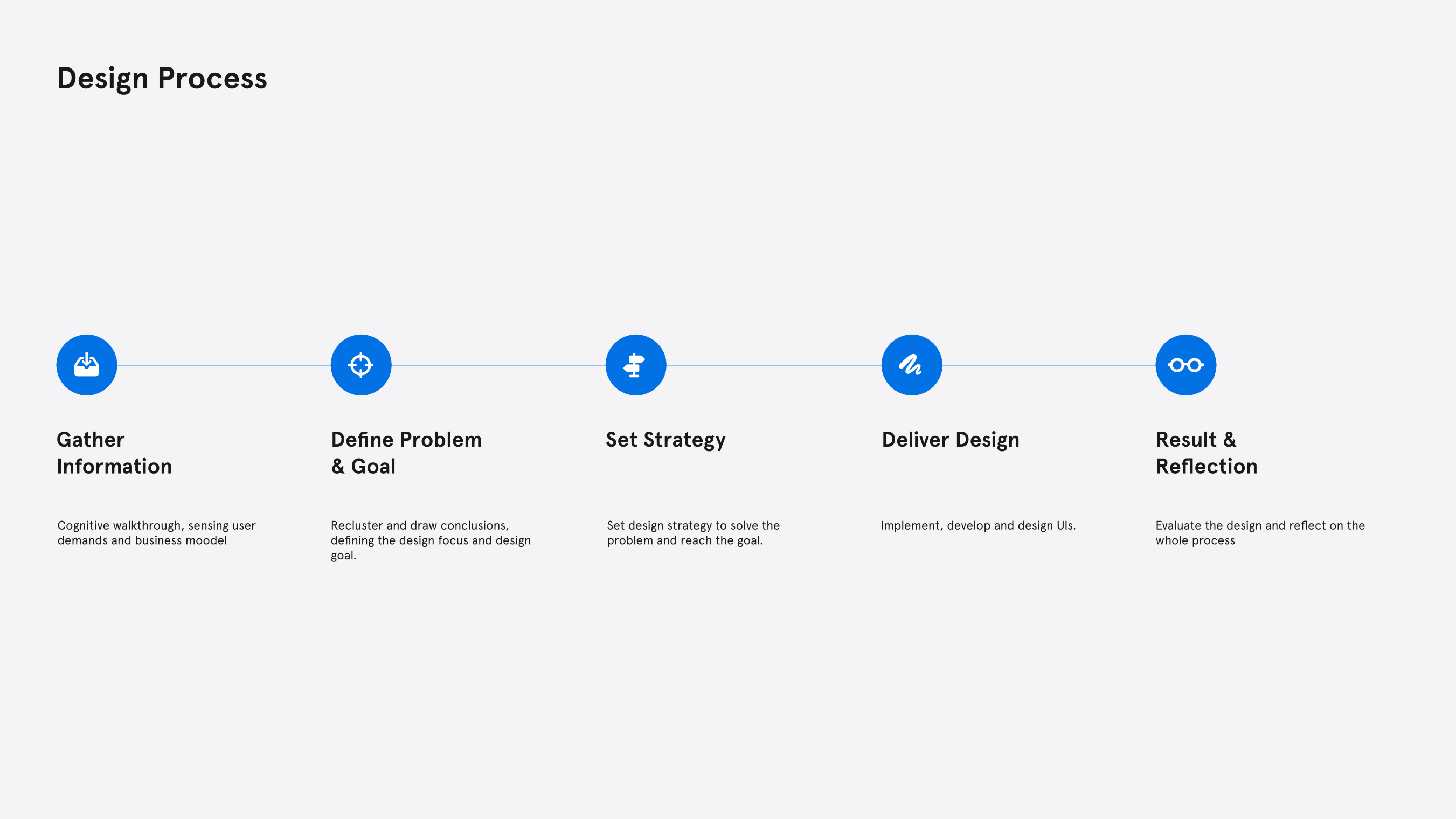
The design process
Beyond Customer App Perspective
To dig into the root causes under the surface, I need to take not only the Customer App, which I'm responsible for, into consideration, but also the whole underlying system and other forms of E-commerce. My analysis consists of three parts, Customer App, Deliver System and comparison of other E-commerce platform(like Taobao App)
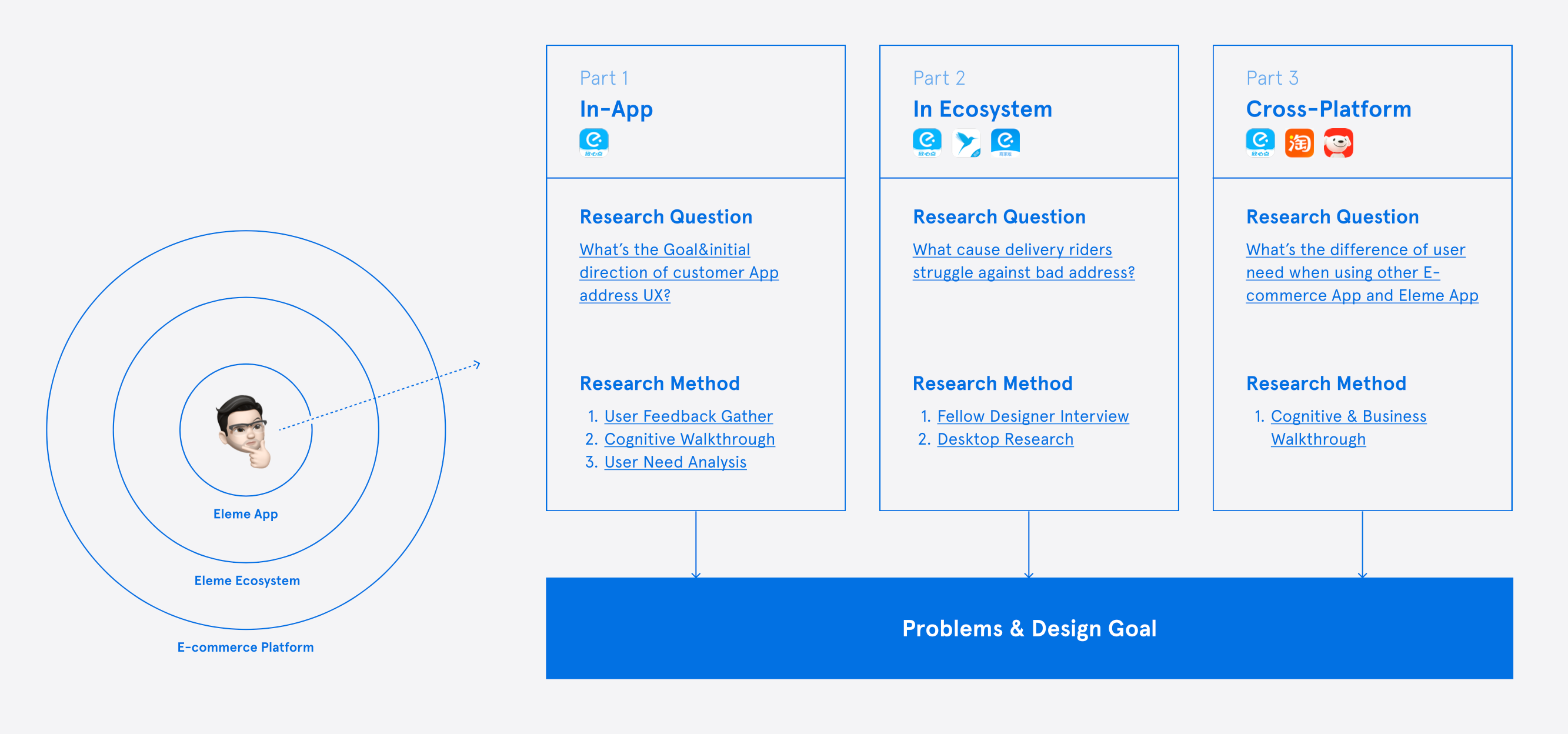
In-App Analysis
Through collecting user feedback, cognitive walkthrough and analysis of user/business need, I had a better understanding of current situation as well as the initial direction of how this design project would conduct - Efficiency and Fluent
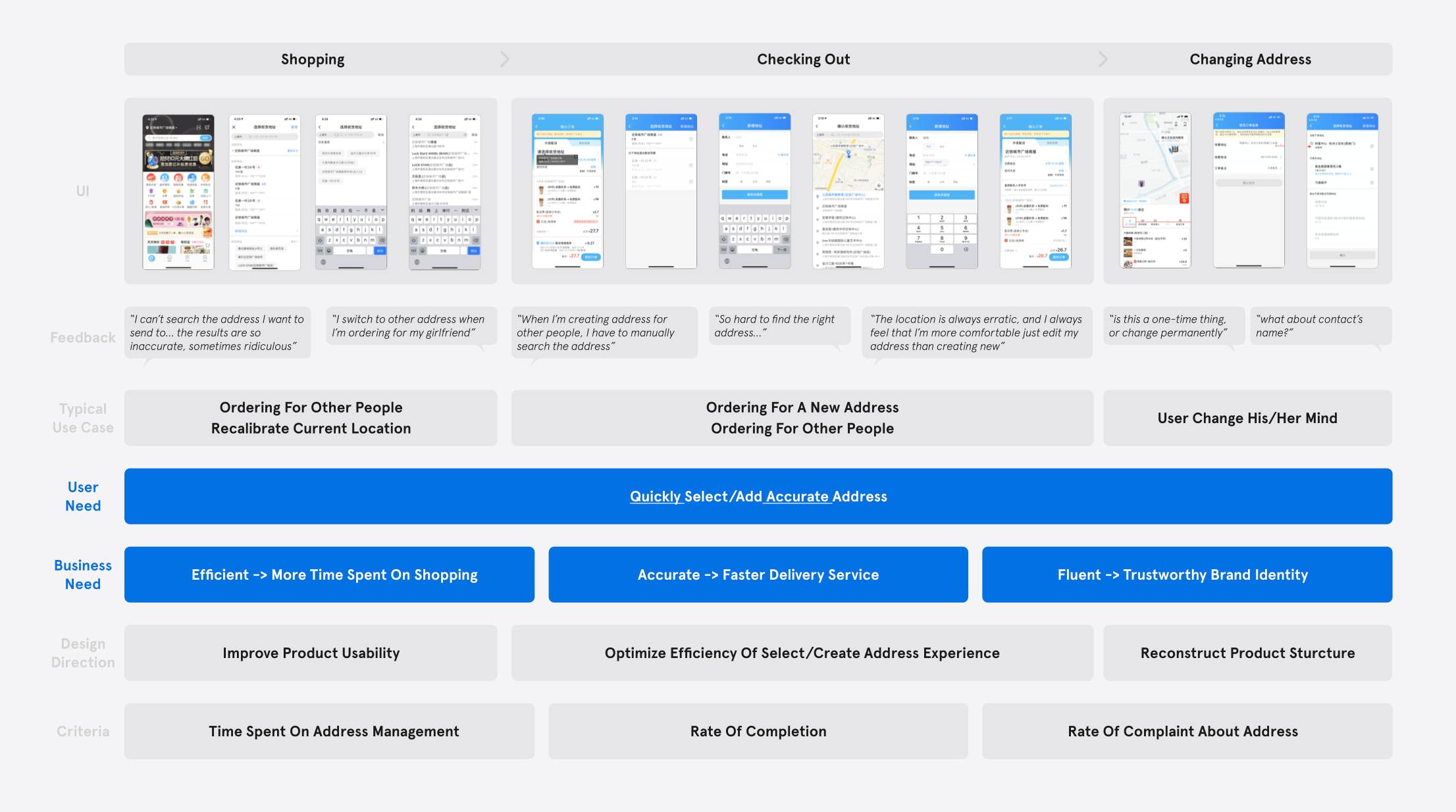
In Ecosystem
Looking deep into how does this bad experience took place, we can see a clear logic chain, from insufficient POl Data to inefficient delivery and longer waiting time.
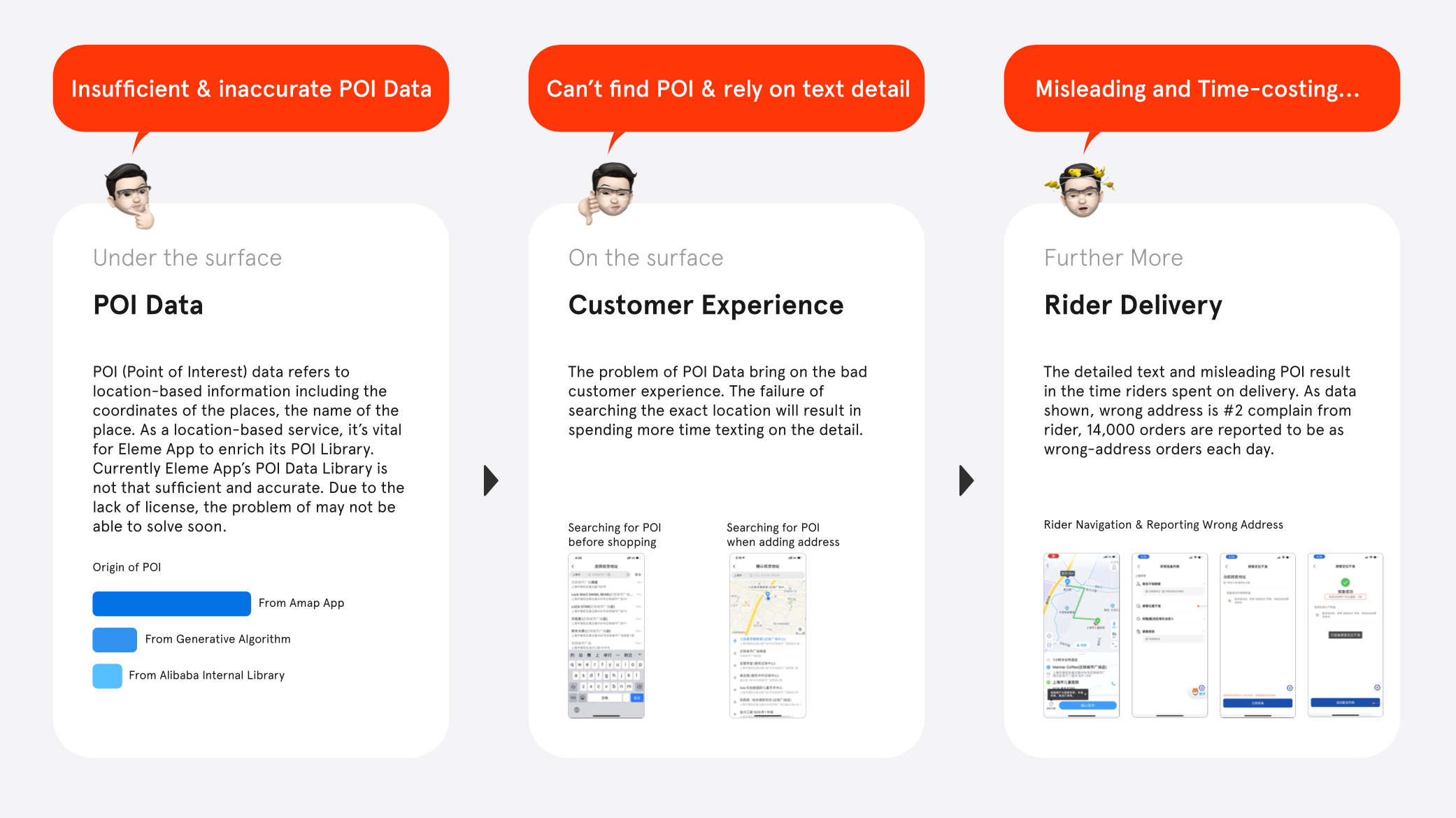
Cross Platform
Comparing with other types of e- commerce business, it can be concluded that customers have different need, which will result in different design result for address management experience.
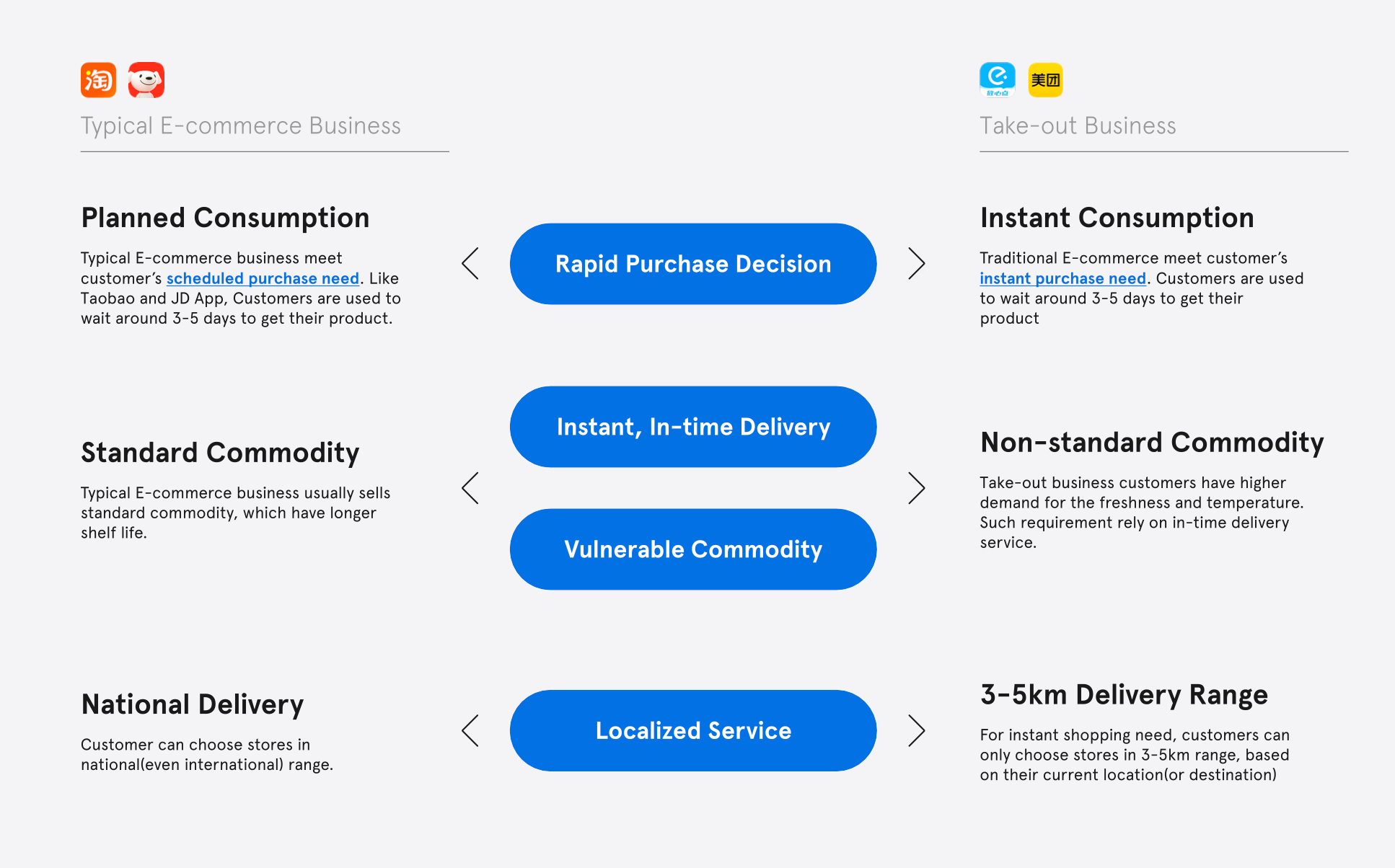
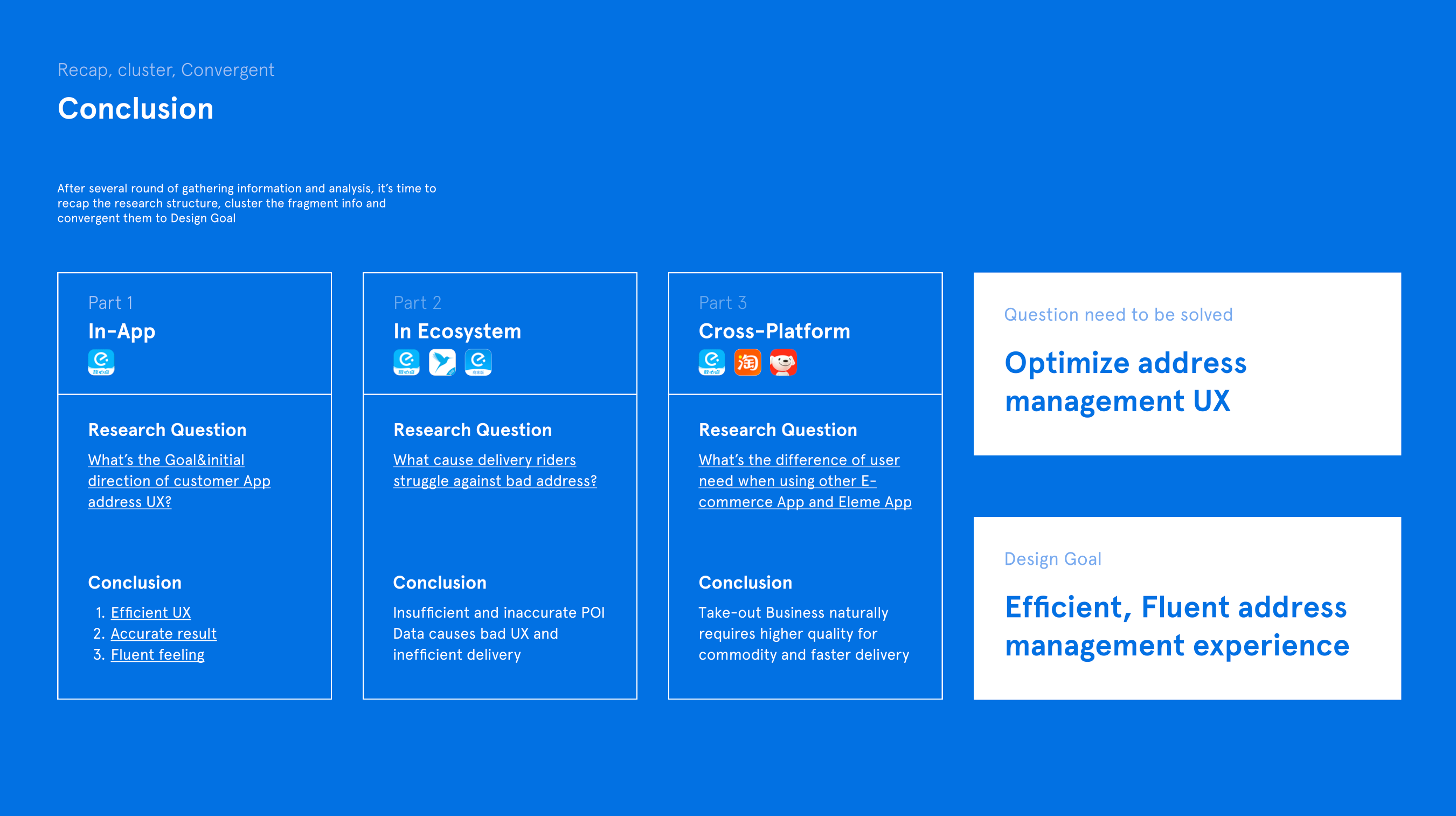
Conclusion of gathering information
Set Strategy
Following the design goal "Efficient" and "Fluent" , I started setting design strategies for each scenario, including choosing before shopping, choosing before checkout and add address.
Therefore, a design walkthrough was conducted about these Uls, trying to find out the next move as well as how to implement the design goal. Each scenario will be elaborated afterwards.
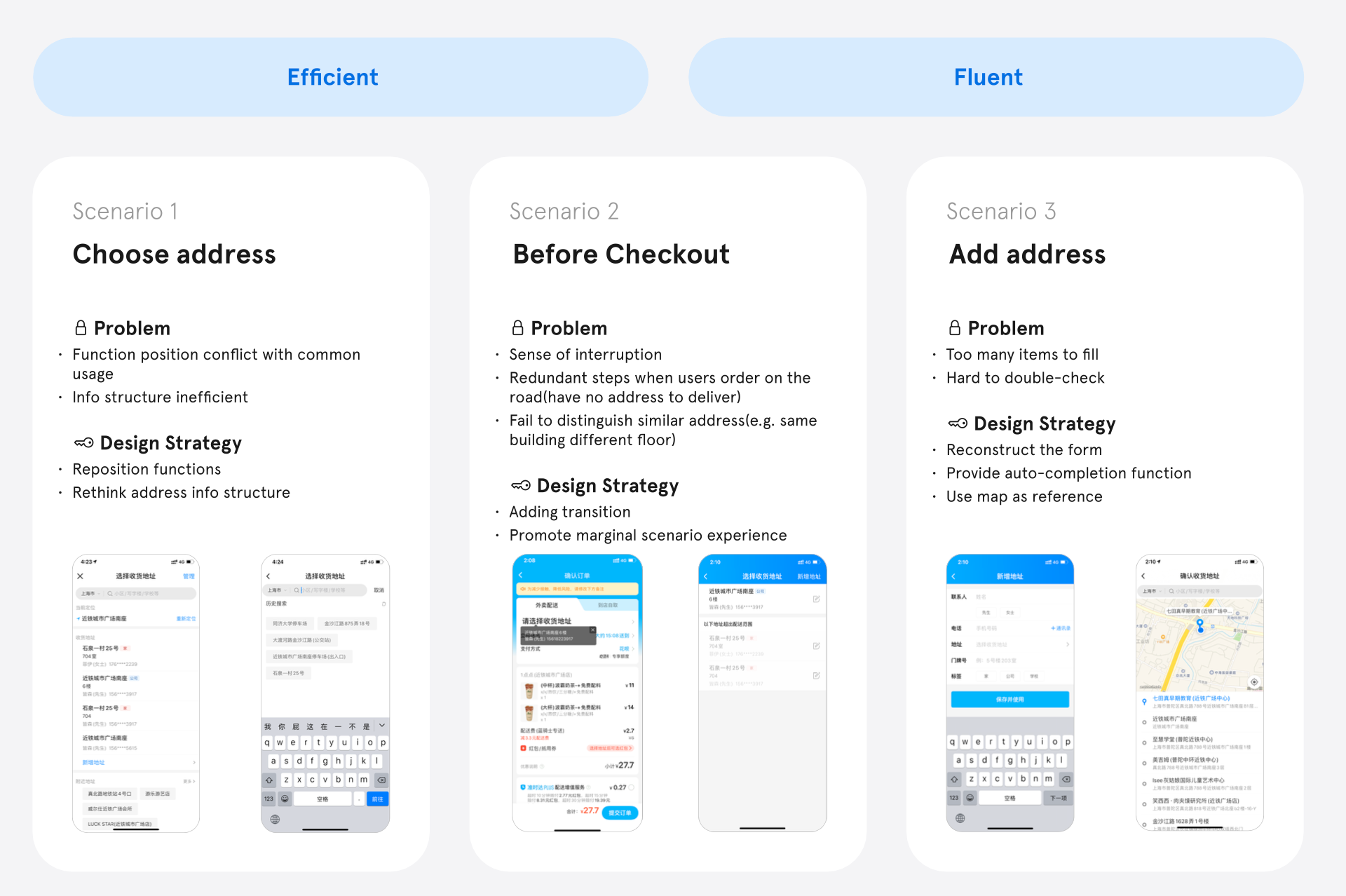
Scenario 1 - Choose Address
In this scenario, typical use cases are switching to other address(20%) and add address(7%). So my design focused on these two parts.

Scenario 2 - Before Checkout
In the most "efficiency-concerned" page - checkout pages, most users will face the first question, choosing address. To enhance the efficiency as well as building sense of fluency, these following design strategies were set and implemented.
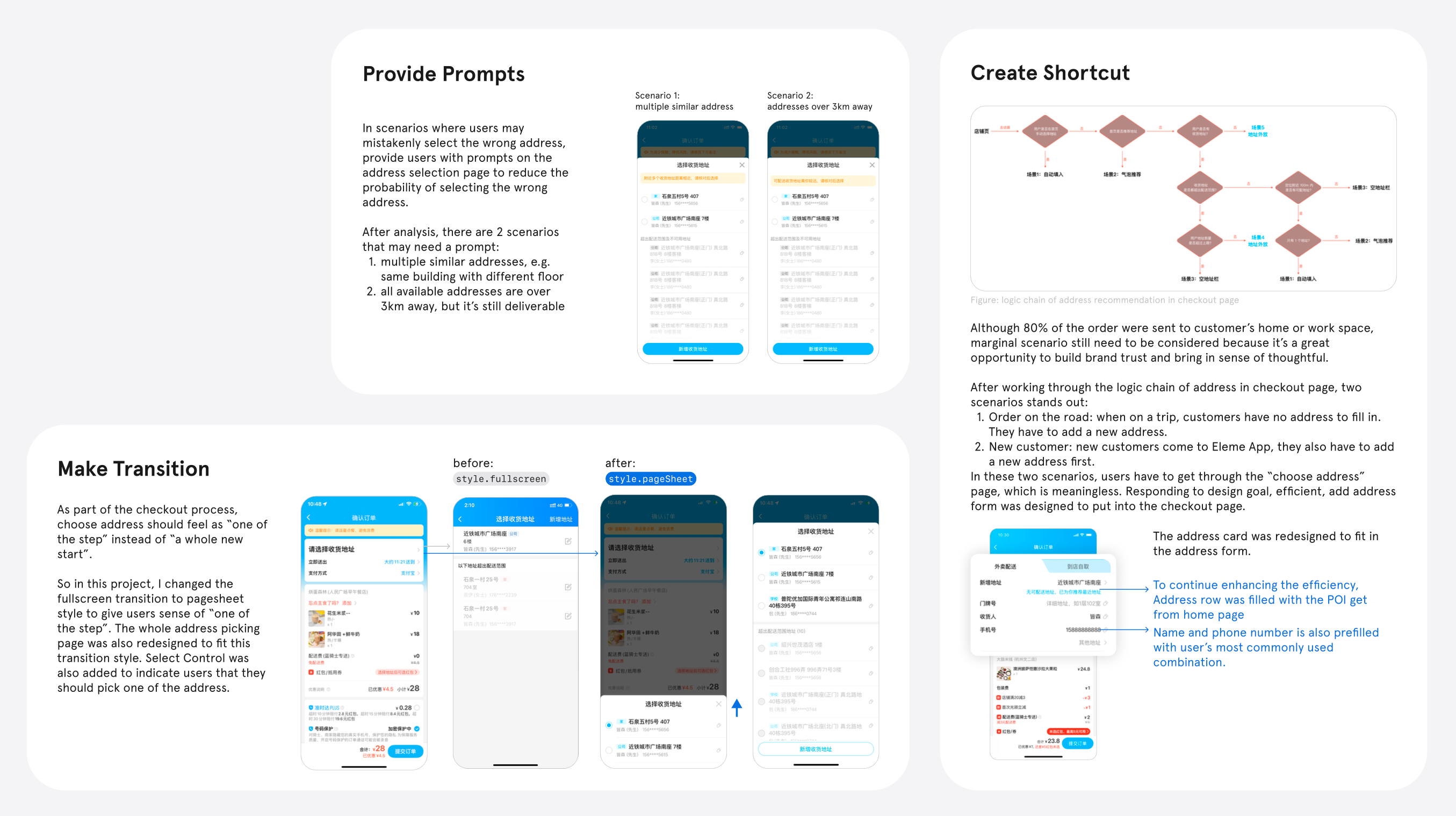
Scenario 3 - Add Address
It is always hard to fill in the form since it has so many items. To enhance the efficiency and ease the pain, the page was totally redesigned and polished.
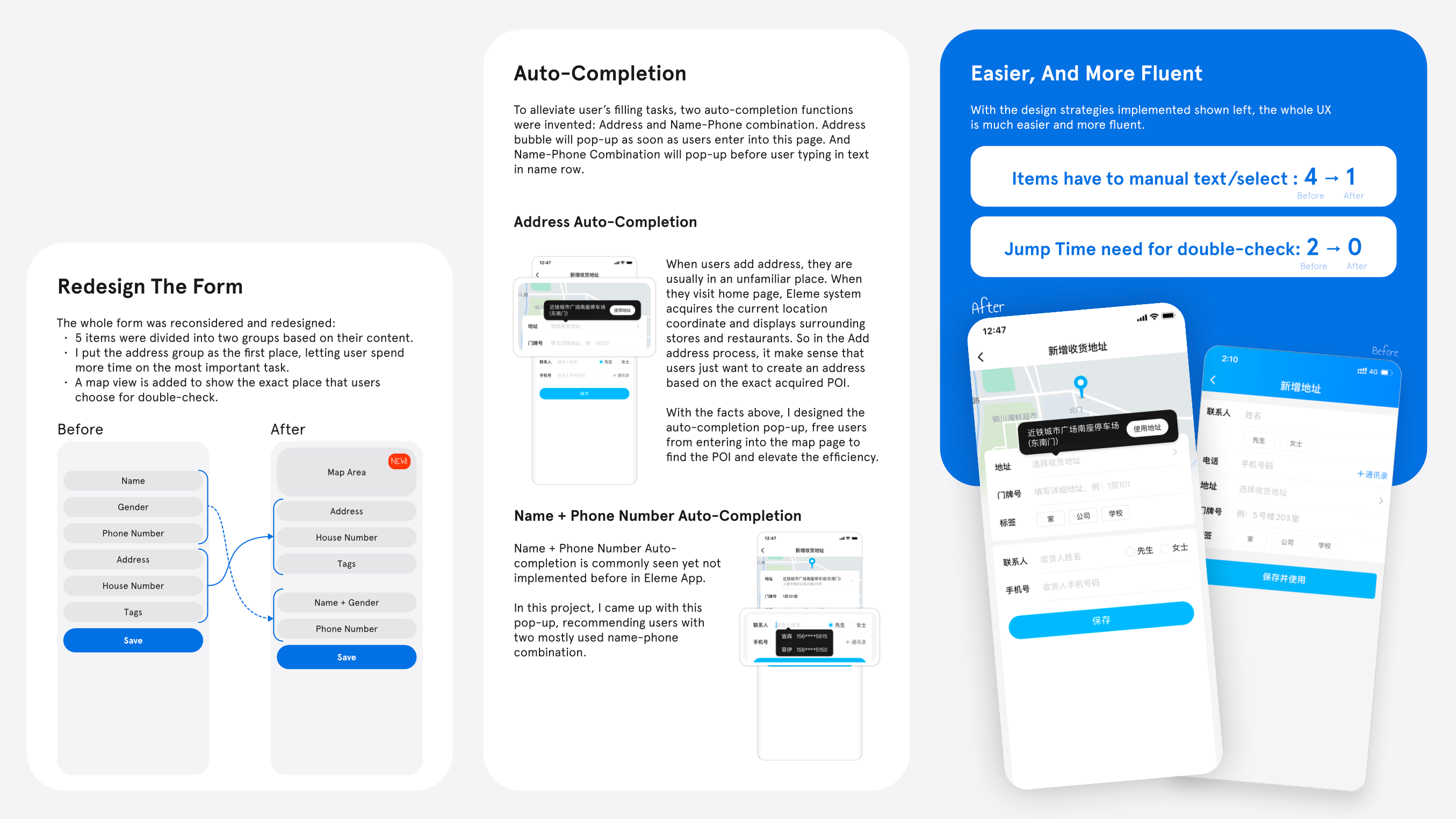

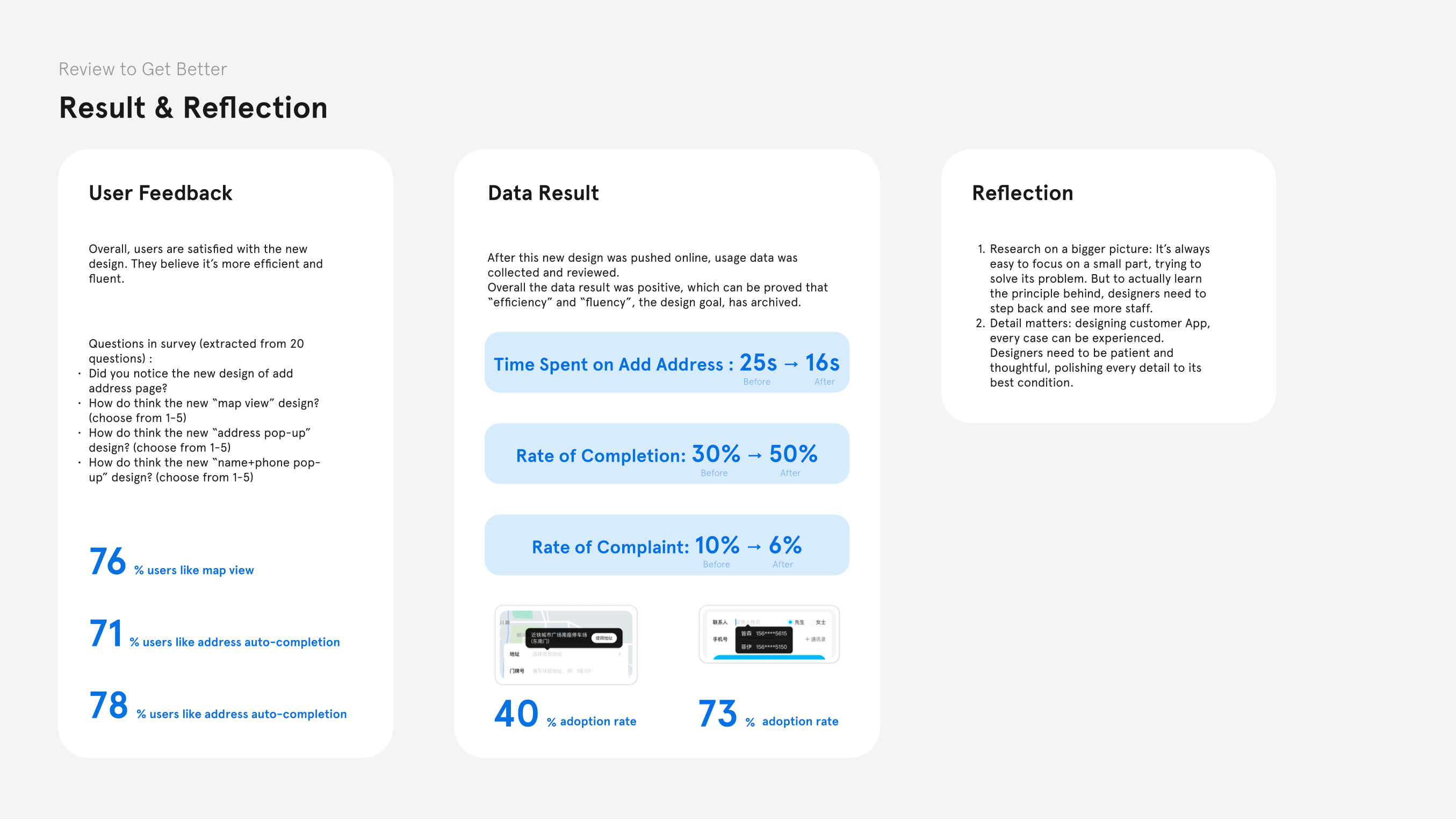
baihongbao@outlook.com